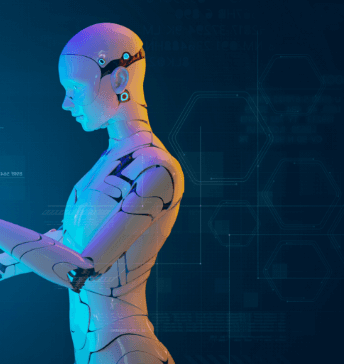Automation in Data Management
Automation has revolutionized data management processes, significantly altering the methods for ingesting, transforming, analyzing, and utilizing data for decision-making. The advent of automation technologies, including artificial intelligence (AI), machine learning (ML), and robotic process automation (RPA), has dramatically improved the efficiency and accuracy of data operations. These technologies automate repetitive tasks, minimize human errors, and allow valuable resources to focus on more strategic activities.
The exponential growth of data volumes, the need for real-time data processing, and the quest for cost-effective solutions are key drivers behind this shift. AI algorithms, for example, can process and analyze large datasets at speeds unattainable by humans, delivering timely insights that inform strategic business decisions. ML models learn from historical data to predict future trends, helping organizations anticipate market dynamics and customer behaviors. RPA can automate routine tasks such as data entry, validation, and reconciliation, significantly boosting efficiency and reducing the risk of human error.
In the financial sector, JP Morgan Chase provides a striking example of automation’s impact. By implementing RPA to automate its data reconciliation process, the bank reduced the time required for reconciliation by 80%, decreased errors by 90%, and redeployed employees to higher-value tasks. This automation not only enhanced operational efficiency but also improved compliance and reporting accuracy, driving business agility and competitive advantage. Additionally, the bank leveraged AI to bolster its fraud detection systems, using machine learning models to analyze transaction patterns and identify potential fraud in real-time, reducing fraud losses by 30%.
Data Integration and ETL
Automated data integration and extract, transform, load (ETL) processes are vital for ensuring smooth data movement across diverse systems. Automating these processes improves data consistency, reliability, and availability, which are crucial for accurate analytics and decision-making. Effective data integration ensures that data from various sources is combined, cleansed, and transformed into a format that is accessible and useful for business intelligence and analytics.
Best practices for automating data ingestion, transformation, and synchronization involve using advanced ETL tools and platforms that support real-time data processing and integration. These tools can connect to various data sources, automatically ingest data, transform it according to predefined rules, and load it into target systems. Tools like Apache NiFi, Talend, and Informatica offer robust features for automating ETL processes, including data validation, error handling, and monitoring. Moreover, these tools support scalable architectures that can grow with an organization’s data needs, providing flexibility and resilience.
Netflix, for example, used Talend’s ETL platform to automate the integration of viewing data from its global user base. By doing so, the company achieved real-time data synchronization, ensuring that content recommendations, user metrics, and performance data were always current. This automation led to a 50% reduction in data processing time and improved data accuracy, enabling Netflix to make faster, data-driven decisions. Additionally, the ability to process data in real-time allowed Netflix to deliver more personalized content to users, enhancing user experience and engagement. The automated ETL processes also facilitated efficient handling of peak loads during new releases, maintaining system performance and user satisfaction.
Analytics with AI and ML
Artificial intelligence and machine learning are elevating data analytics by automating complex analytical tasks and enhancing decision-making capabilities. AI and ML algorithms are crucial in various applications such as predictive analytics, prescriptive analytics, anomaly detection, and natural language processing (NLP).
Predictive analytics uses historical data to forecast future events, helping businesses anticipate market trends and customer behavior. Prescriptive analytics takes this a step further by recommending actions based on predictive insights, providing actionable strategies to achieve desired outcomes. Anomaly detection algorithms identify unusual patterns that could indicate potential issues or opportunities, enabling proactive measures. NLP allows machines to understand and respond to human language, facilitating automated customer service, sentiment analysis, and more.
Cleveland Clinic, for instance, implemented ML algorithms to predict patient readmissions. By analyzing patient data, including medical history, treatment plans, and lifestyle factors, the ML model identified high-risk patients and recommended targeted interventions to prevent readmissions. This approach not only improved patient outcomes but also reduced readmission rates by 15%, resulting in significant cost savings for the healthcare provider. Furthermore, the insights derived from the ML models helped the clinic optimize its resource allocation and enhance overall care quality. Additionally, the clinic integrated AI-driven diagnostic tools to assist doctors in identifying potential health issues more accurately and quickly, improving the speed and accuracy of diagnoses by 20%.
These real-world examples illustrate how AI and ML are transforming data analytics, enabling organizations to extract actionable insights, optimize business processes, and drive innovation. By leveraging these technologies, businesses can stay ahead of the competition and achieve sustained success in an era where data and innovation are paramount. The continuous evolution of AI and ML technologies promises even greater potential for businesses to utilize data in previously unimaginable ways, paving the way for a future where data-driven decision-making is the norm. Advances in AI, such as deep learning and reinforcement learning, are expected to further enhance analytics capabilities, opening new avenues for innovation and growth.
In the era where data reigns supreme and innovation knows no bounds, automation stands as a pivotal enabler for organizations seeking sustained success. Here are some powerful strategies to effectively harness automation:
1. Embrace End-to-End Automation: Implement end-to-end automation to streamline entire workflows rather than isolated tasks. This comprehensive approach maximizes efficiency, reduces bottlenecks, and enhances overall productivity. From data ingestion to analytics and reporting, integrating automation across all stages ensures seamless operations.
2. Adopt AI and Machine Learning: Implement end-to-end automation to streamline entire workflows rather than isolated tasks. This comprehensive approach maximizes efficiency, reduces bottlenecks, and enhances overall productivity. From data ingestion to analytics and reporting, integrating automation across all stages ensures seamless operations.
3. Implement Robotic Process Automation (RPA): Deploy RPA to automate repetitive and rule-based tasks such as data entry, invoice processing, and customer support. RPA bots can work around the clock, significantly reducing errors and operational costs. Additionally, RPA can be integrated with AI to handle more complex tasks that require cognitive capabilities.
4. Focus on Data Integration and ETL Automation: Automate data integration and ETL (extract, transform, load) processes to ensure seamless data flow across different systems. This strategy improves data consistency, reliability, and availability, which are crucial for accurate analytics and decision-making. Using tools like Apache NiFi, Talend, and Informatica can streamline these processes and reduce manual intervention.
5. Enhance Cybersecurity with Automated Threat Detection: Utilize automation for cybersecurity to detect and respond to threats in real-time. Automated threat detection systems can analyze network traffic, identify suspicious activities, and trigger alerts or countermeasures instantly. This proactive approach helps in safeguarding sensitive data and maintaining regulatory compliance.
6. Leverage Cloud Automation: Adopt cloud automation to manage infrastructure efficiently. Cloud platforms such as AWS, Azure, and Google Cloud offer tools to automate resource provisioning, scaling, and management. This ensures optimal utilization of resources, reduces costs, and enhances scalability to meet dynamic business needs.
7. Develop a Center of Excellence (CoE): Establish a Center of Excellence for automation to centralize expertise, best practices, and governance. A CoE can provide strategic direction, ensure standardization, and oversee the implementation of automation initiatives across the organization. It also facilitates knowledge sharing and continuous improvement.
8. Integrate Automation into Customer Relationship Management (CRM): Integrate automation within CRM systems to enhance customer interactions and service delivery. Automation can be used for lead management, customer segmentation, personalized marketing campaigns, and post-sale support. This strategy improves customer satisfaction, loyalty, and retention rates.
9. Invest in Employee Training and Upskilling: Automation technologies evolve rapidly, necessitating continuous learning. Invest in training and upskilling employees to ensure they can effectively work alongside automated systems. A workforce that understands automation can leverage it to its full potential, driving innovation and productivity.
10. Measure and Optimize Automation Initiatives: Regularly measure the impact of automation initiatives using key performance indicators (KPIs) such as process efficiency, cost savings, error reduction, and employee satisfaction. Use these metrics to identify areas for further optimization and ensure that automation efforts align with strategic business objectives.
11. Foster a Culture of Innovation: Cultivate a culture that encourages innovation and embraces change. Promote the benefits of automation and involve employees in the process of identifying opportunities for automation. This inclusive approach fosters buy-in, reduces resistance, and accelerates the adoption of automation technologies.
Case Study: Procter & Gamble (P&G)
Procter & Gamble (P&G) provides a compelling example of leveraging automation for sustained success. The company integrated automation across its supply chain operations, employing AI and ML to optimize demand forecasting, inventory management, and production planning. By automating these processes, P&G achieved a 20% improvement in forecast accuracy and a 15% reduction in inventory costs. Additionally, RPA was used to automate financial reporting and compliance tasks, resulting in a 50% reduction in processing time and enhanced data accuracy. Through these strategic initiatives, P&G not only enhanced operational efficiency but also improved agility and responsiveness to market changes, demonstrating the transformative potential of automation.
By implementing these strategies, organizations can effectively harness the power of automation to drive sustained success, optimize operations, and stay competitive in the rapidly evolving digital landscape.
Along with the strategies, in an era where data and innovation are paramount, leveraging powerful tools and technologies around automation is crucial for organizations aiming for sustained success. Here are some of the most impactful tools and technologies currently shaping the landscape:
1. Artificial Intelligence (AI) and Machine Learning (ML) Platforms
Key Technologies:
- TensorFlow: An open-source platform developed by Google, TensorFlow is widely used for machine learning and deep learning applications.
- PyTorch: Developed by Facebook, PyTorch is another popular open-source machine learning framework that provides a flexible and dynamic approach to building and training neural networks.
- Amazon SageMaker: A fully managed service by AWS that allows developers and data scientists to build, train, and deploy machine learning models at scale.
Use Cases:
- Predictive analytics for forecasting sales and demand.
- Natural Language Processing (NLP) for sentiment analysis and customer feedback.
- Image and video recognition for quality control in manufacturing.
2. Robotic Process Automation (RPA) Tools
Key Technologies:
- UiPath: A leading RPA tool that enables the automation of repetitive, rule-based tasks across various business processes.
- Blue Prism: Another prominent RPA platform that offers robust automation capabilities, particularly in finance and banking sectors.
- Automation Anywhere: Provides comprehensive RPA solutions with AI-driven analytics to enhance automation outcomes.
Use Cases:
- Automating data entry and validation tasks.
- Processing invoices and handling accounts payable/receivable.
- Managing customer service interactions through chatbots.
3. Data Integration and ETL (Extract, Transform, Load) Tools
Key Technologies:
- Talend: An open-source data integration platform that automates ETL processes, ensuring seamless data movement and transformation.
- Apache NiFi: A robust tool for automating data flow between systems, providing real-time data integration and processing capabilities.
- Informatica PowerCenter: A powerful data integration tool that supports complex ETL operations and ensures data quality and governance.
Use Cases:
- Integrating disparate data sources into a unified data warehouse.
- Transforming raw data into actionable insights for business intelligence.
- Real-time data synchronization across various enterprise systems.
4. Cloud Automation Tools
Key Technologies:
- Amazon Web Services (AWS): Offers a suite of automation tools such as AWS Lambda for serverless computing and AWS CloudFormation for infrastructure as code (IaC).
- Microsoft Azure: Provides tools like Azure Automation for orchestrating cloud workflows and Azure DevOps for continuous integration and delivery (CI/CD).
- Google Cloud Platform (GCP): Features automation tools like Google Cloud Functions and Google Kubernetes Engine for container orchestration.
Use Cases:
- Automating resource provisioning and scaling.
- Managing cloud infrastructure efficiently with minimal manual intervention.
- Implementing continuous integration and delivery pipelines for software development.
5. Business Process Management (BPM) Tools
Key Technologies:
- IBM Business Automation Workflow: Combines BPM and case management capabilities to automate complex business processes.
- Appian: A low-code automation platform that accelerates the development of business applications with powerful process automation features.
- Pega: Offers a unified platform for BPM and customer engagement, leveraging AI and RPA for intelligent automation.
Use Cases:
- Streamlining business processes such as onboarding, compliance, and order management.
- Automating workflow approvals and task assignments.
- Enhancing customer engagement through personalized, automated interactions.
6. Cybersecurity Automation Tools
Key Technologies:
- Splunk: A powerful platform for real-time monitoring and analyzing machine data, with automation capabilities for threat detection and response.
- Palo Alto Networks Cortex XSOAR: Provides security orchestration, automation, and response (SOAR) to automate incident response workflows.
- IBM QRadar: A security information and event management (SIEM) solution that automates threat detection and compliance reporting.
Use Cases:
- Automating the detection and response to cybersecurity threats.
- Conducting real-time security monitoring and incident management.
- Ensuring regulatory compliance through automated reporting and auditing.
7. Customer Relationship Management (CRM) Automation Tools
Key Technologies:
- Salesforce: A leading CRM platform that offers a wide range of automation tools for sales, marketing, and customer service processes.
- HubSpot: Provides marketing automation, sales automation, and customer service tools to enhance customer relationship management.
- Zoho CRM: Offers automation features for lead management, workflow automation, and customer engagement.
Use Cases:
- Automating lead scoring and nurturing processes.
- Personalizing marketing campaigns based on customer data.
- Streamlining customer service operations with automated ticketing and response systems.
8. Data Analytics and Business Intelligence (BI) Tools
Key Technologies:
- Tableau: A powerful BI tool that automates data visualization and dashboard creation for insightful analytics.
- Power BI: A Microsoft product that provides robust data analytics and reporting capabilities with automation features.
- Looker: A data platform that integrates with various data sources to automate analytics and business intelligence workflows.
Use Cases:
- Automating the generation of business reports and dashboards.
- Real-time data analysis for informed decision-making.
- Identifying trends and patterns through automated data visualization.
By harnessing these powerful tools and technologies, organizations can effectively automate various aspects of their operations, leading to increased efficiency, accuracy, and agility. This strategic use of automation enables businesses to stay competitive and achieve sustained success in an era where data and innovation are driving forces.




















